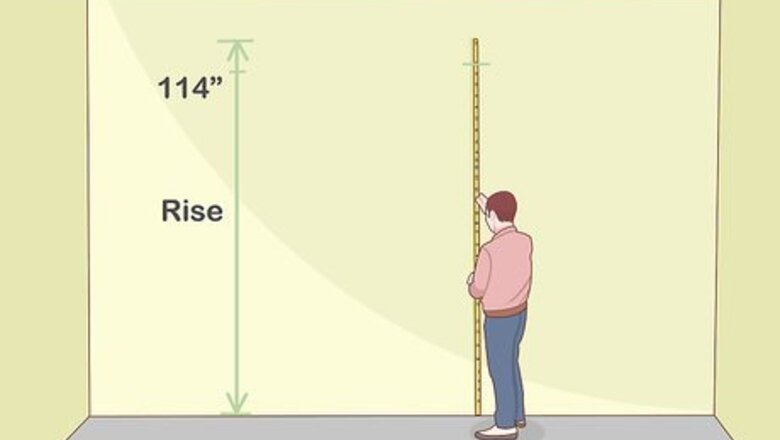
views
Measuring the Rise and Number of Steps
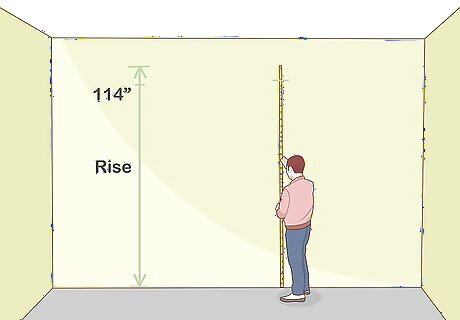
Measure the height, or "rise," of the space you want to make stairs. Using a tape measure, make measurements of the total height of the space you want to make stairs from the bottom to the top. This is called the "rise" of your measurements and will determine how high your stairs will go. You should also measure the ceiling height.Make sure to record every measurement you make to prevent mistakes while planning and building the stairs
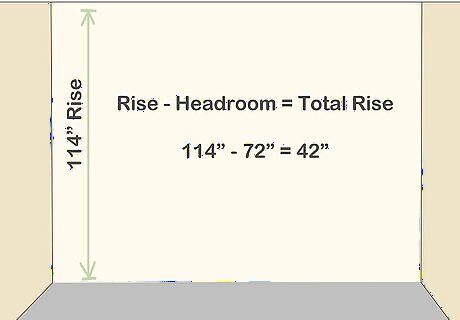
Subtract 6–7 feet (1.8–2.1 m) from the total rise to account for headroom. Headroom refers to the height between the top of the stair to the ceiling. Add a headroom measurement of at least 6–7 feet (1.8–2.1 m) to prevent injuries. Headroom heights usually aren't regulated by building codes, but your local building code may have recommendations for stair headroom, so be sure to check. For instance, if the total rise is 114 inches (290 cm), subtract 6 feet (1.8 m), which is 72 inches (180 cm), to account for the headroom. This will leave you with a rise of 42 inches (110 cm).
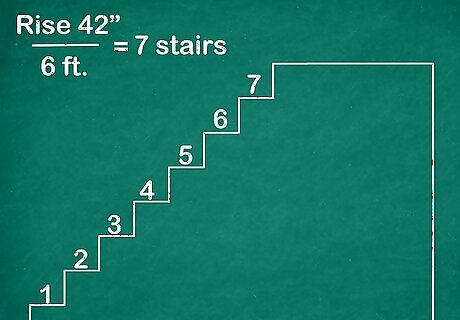
Divide the rise by 6 or 7 inches (15 or 18 cm) to find the total number of stairs. For larger stairs, divide by 6 and for smaller stairs, divide by 7. The total you get is how many stairs your future staircase will have so you can plan accordingly. If the rise is 42 inches (110 cm) (after subtracting 6–7 feet (1.8–2.1 m) for headroom) and you want larger stairs, for example, divide 42 by 6. Your staircase will have 7 stairs. If dividing the height to the second floor by your preferred height for the riser does not give you a whole number, round your calculation up if the decimal is larger than 0.5 or down if the decimal is smaller than 0.4.
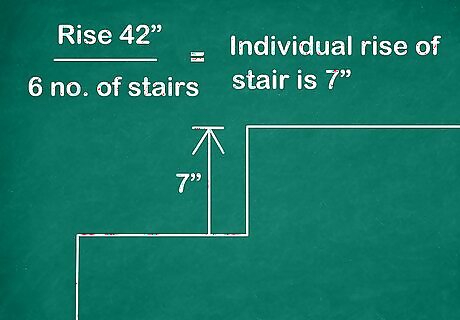
Divide the rise by the number of stairs to find the individual stair rise. The stair rise refers to how high each individual step is. To determine the individual stair rise, divide the overall rise by the planned number of stairs. If the rise is 42 inches (110 cm) and the number of stairs is 6, for example, each individual stair will have a rise of 7 inches (18 cm).
Determining the Run, Width, and Length
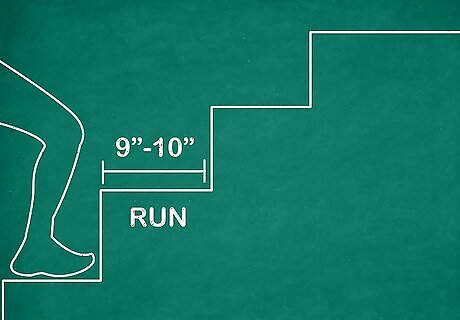
Plan for the individual "run" of each step to be 9–10 inches (23–25 cm). The run, or tread, refers to how long each step is. Generally, a stair's run should be at least 9–10 inches (23–25 cm) so people have enough room to step, but you can make them longer if desired. The depth of each stair has to be enough for a person to safely walk up.
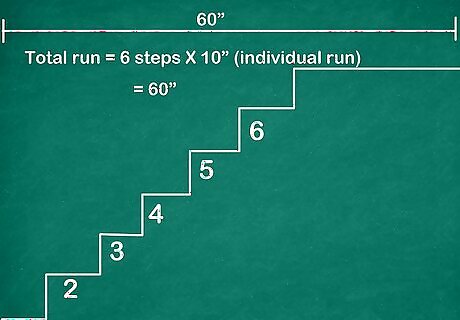
Find the total run by multiplying the individual run by the number of steps. The total run refers to how long your overall staircase will be. To determine the overall run, multiply the step run by the planned number of steps in your staircase. If your staircase will have 6 steps and your run is 10 inches (25 cm), for example, the total run is 60 inches (150 cm).
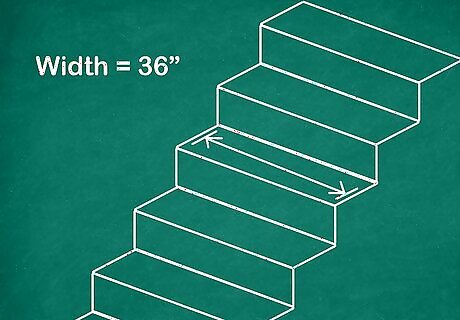
Plan for the width of each stair to be 36 inches (91 cm). The stair width refers to how wide the top of each stair is, and it is perpendicular to the rise of each step. The average minimum width for each stair is 36 inches (91 cm), but you can make the stairs wider if desired. This is the same as the total width of the staircase as well. For a specific minimum width, contact your local government about the building code for stairs.
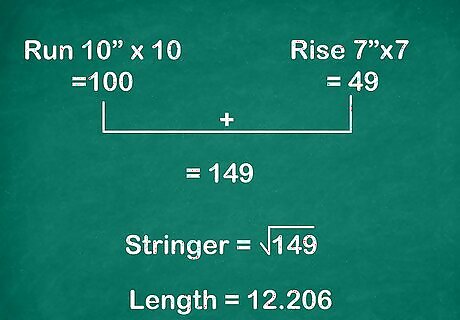
Calculate your staircase's stringer length. Stringers run diagonally along the length of each stair to prevent them from collapsing. To determine their length, square the run, square the individual stair rise, and then add the 2 numbers together. From there, find the square root of the answer for the length of each stringer. For instance, if the run is 10 inches, square 10 by multiplying it by itself to get 100. If the individual stair rise is 7 inches, square 7 by multiplying it by itself to get 49 inches. Add 100 and 49 to get 149. Then, find the square root of 149, which is 12.206, meaning the length of each stringer will be 12.2 inches.



















Comments
0 comment